Like many others, I grieved the loss of “Godfather of Commander” Sheldon Menery this month.
I can’t claim that I was Sheldon’s friend. I was never a guest at his house, nor he at mine. We never played Commander. If I ever had a meal with him, I do not remember what we ate or said.
I was, however, Sheldon’s copy editor for over six years. It was seldom hard work. By the time I stepped into that role, he’d had well over a decade of experience writing for Star City Games, and he knew what he wanted to say and how to say it. I was no Gordon Lish, grandly reshaping his pieces, but the word-butler who polished the pieces before setting them out.
I read his thoughts before anyone else, and I got paid for it. What a ludicrous privilege.
As I started coming to terms with the fact that I’d never do it again, I turned to (among other sources) the game we shared. Here, then, is a brief meditation on how Magic: The Gathering settings handle funeral rites, mourning, and related topics.
For the Dead
Funeral-like behavior is as old as, and possibly older than, humanity itself. Out of the practical question of what to do with a corpse that will soon decay, a whole series of solutions has arisen, from burial in the ground to consumption by fire, sinking at sea, and even sending into space.
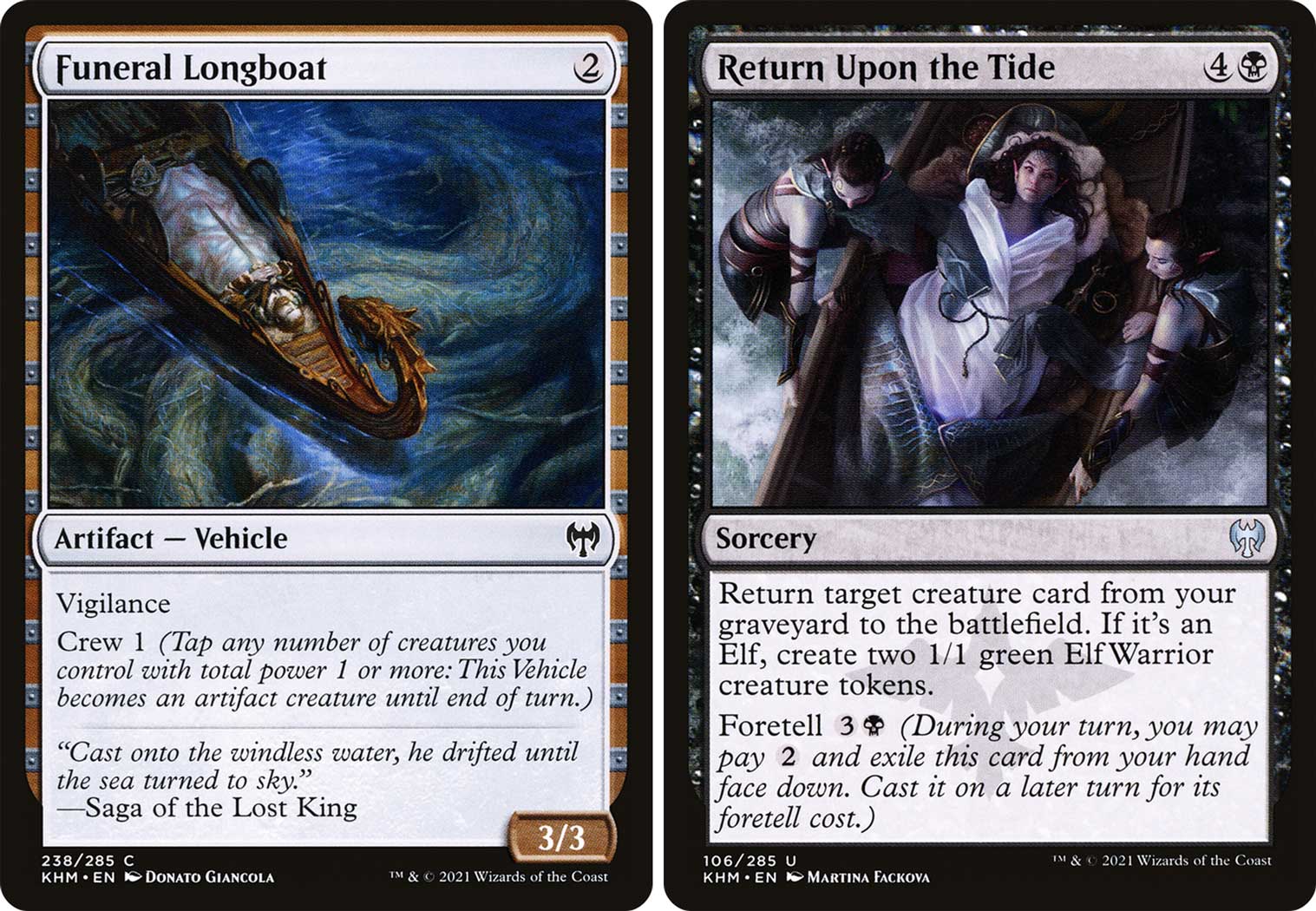
These solutions intertwine with the religious, the spiritual, the moral, and the ethical. They often conflict and can be mutually exclusive. An Otarian nomad’s practical or sacred funeral pyre is a Thraben’s heresy.
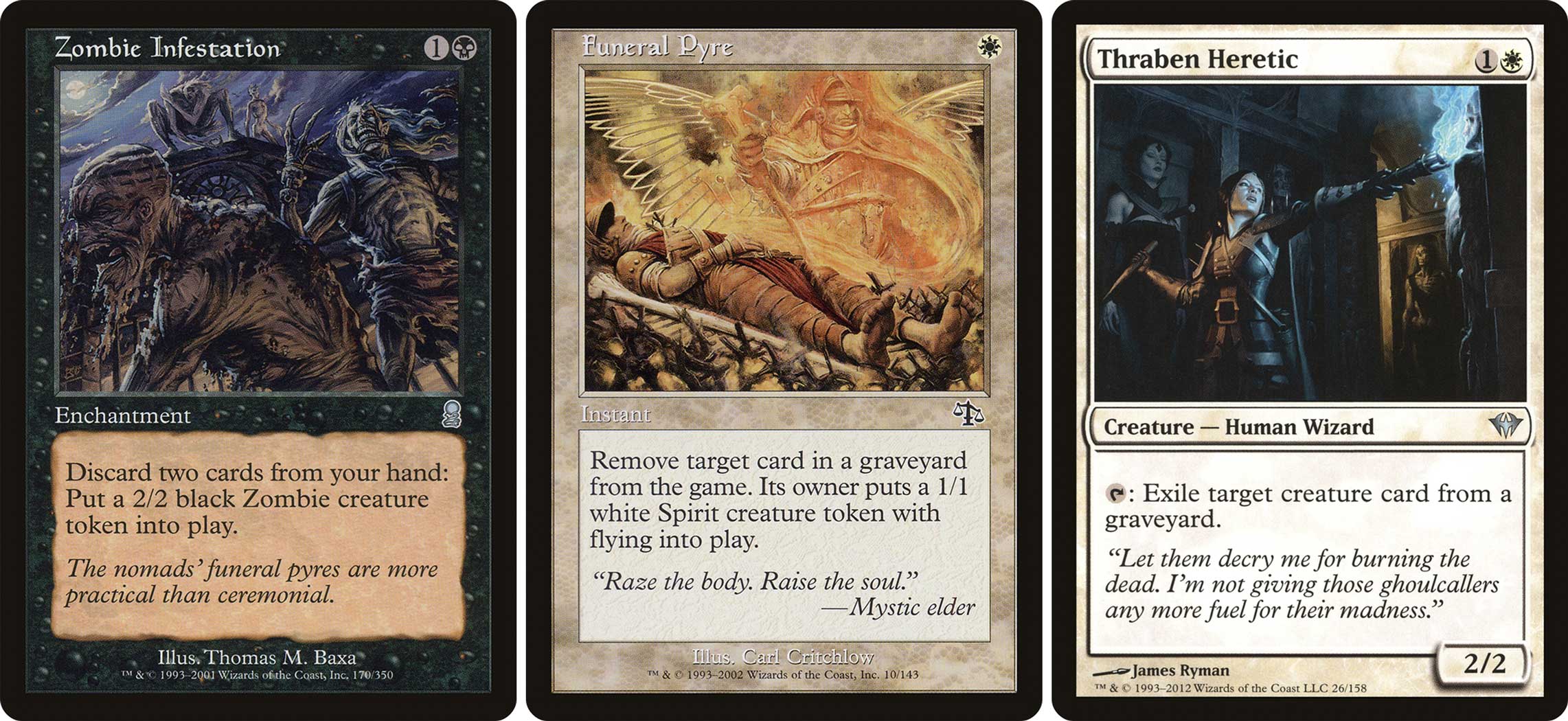
The innate sense of giving the dead their due (whatever that “due” might be) gives the flavor text on Thraben Heretic its sting. The Heretic knows her society’s right and wrong, but also reality, and has steeled herself to accept the consequences for her reputation and conscience. It offers a twist on the ancient Greek tragedy Antigone by Sophocles, with its wrenching choice between obeying authority and honoring the dead.
The Heretic, at least, is acting out of genuine concern rather than malice. It is not a coincidence that disrespect for the dead is a common trait among Magic’s recent major villains: Nicol Bolas with his walking mummies on Amonkhet and his lazotep-coated undead invasion force; the Phyrexians’ scrapping of bodies for parts; the all-encompassing annihilation of the Eldrazi that ends, as the Tenth Edition flavor text on Rain of Tears states, with “no one left to weep.”
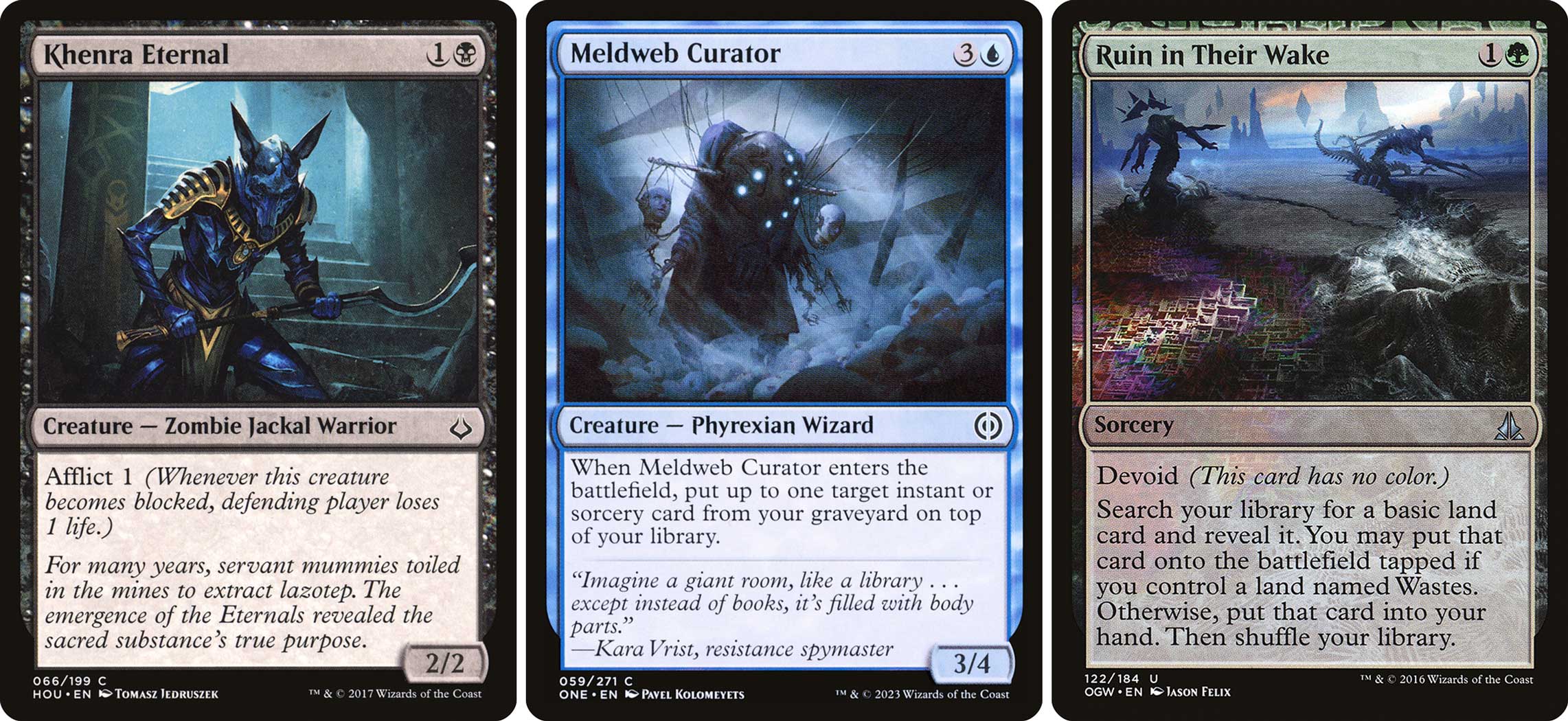
Magic: The Gathering also uses disrespect to the dead to show the rot within societies or even whole settings. As seen in Streets of New Capenna, for example, while life might have been delightful for some in pre-Phyrexian Invasion New Capenna, death and disposal were dismal affairs, from the dismemberment seen on Ominous Parcel to the unsettling duo of Sleep with the Fishes and Exotic Pets. Cemetery Tampering and Dig Up the Body hardly inspire trust in the idea of eternal rest, and neither does Pyre-Sledge Arsonist. The sheer profusion of wiseacre lines about dead bodies—the letter C alone has three such flavor texts—hammers home the theme.
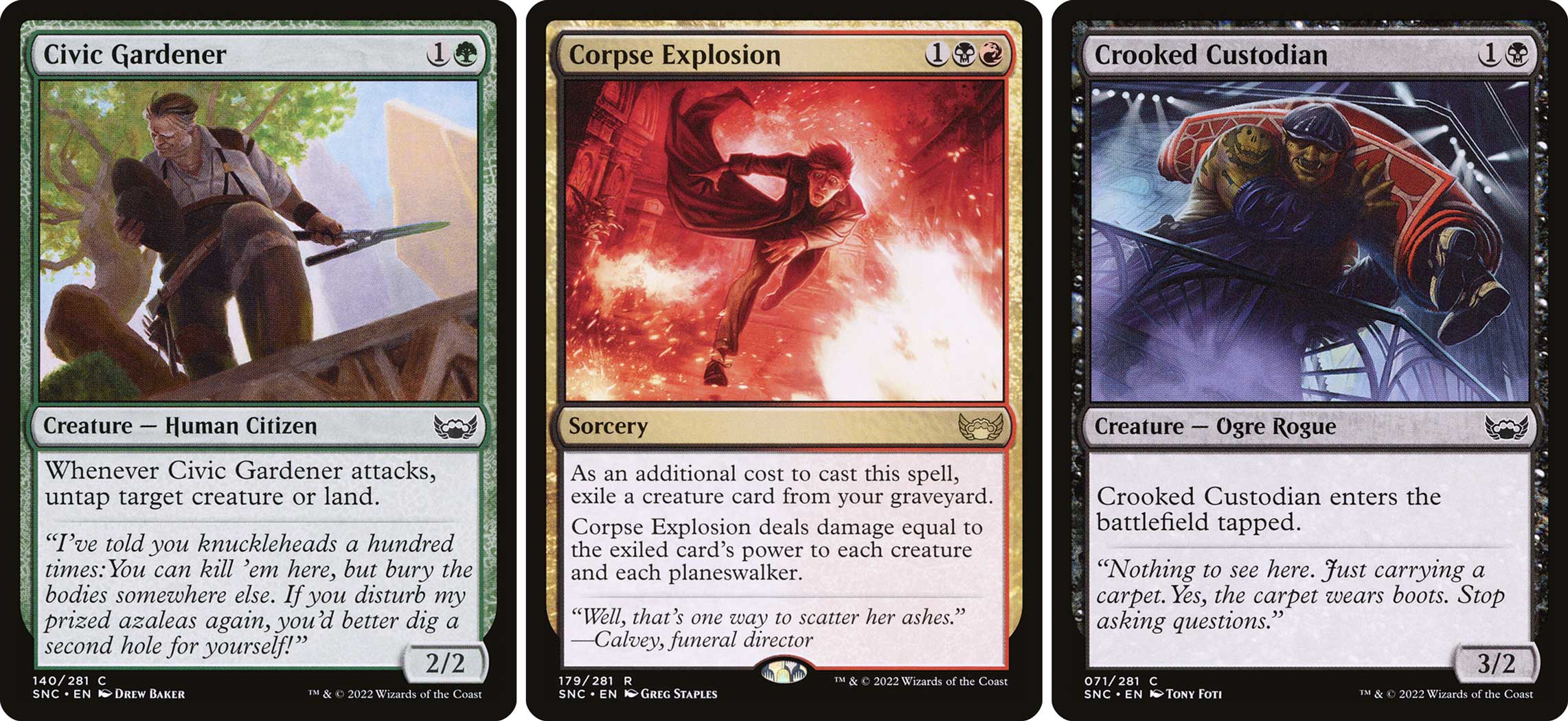
And yet, for all of Magic’s emphasis on necromantic nastiness, there remains a shining thread of honoring the deceased. Beyond individual cards or small clusters within sets, this theme is written largest within the Artist Series: Sidharth Chaturvedi Secret Lair. In four cards, Chaturvedi tells the moving story of the Envoy, a granddaughter who goes on a pilgrimage to scatter her grandmother’s ashes in a particular place, crossing the sea and braving spectral dangers to do so.
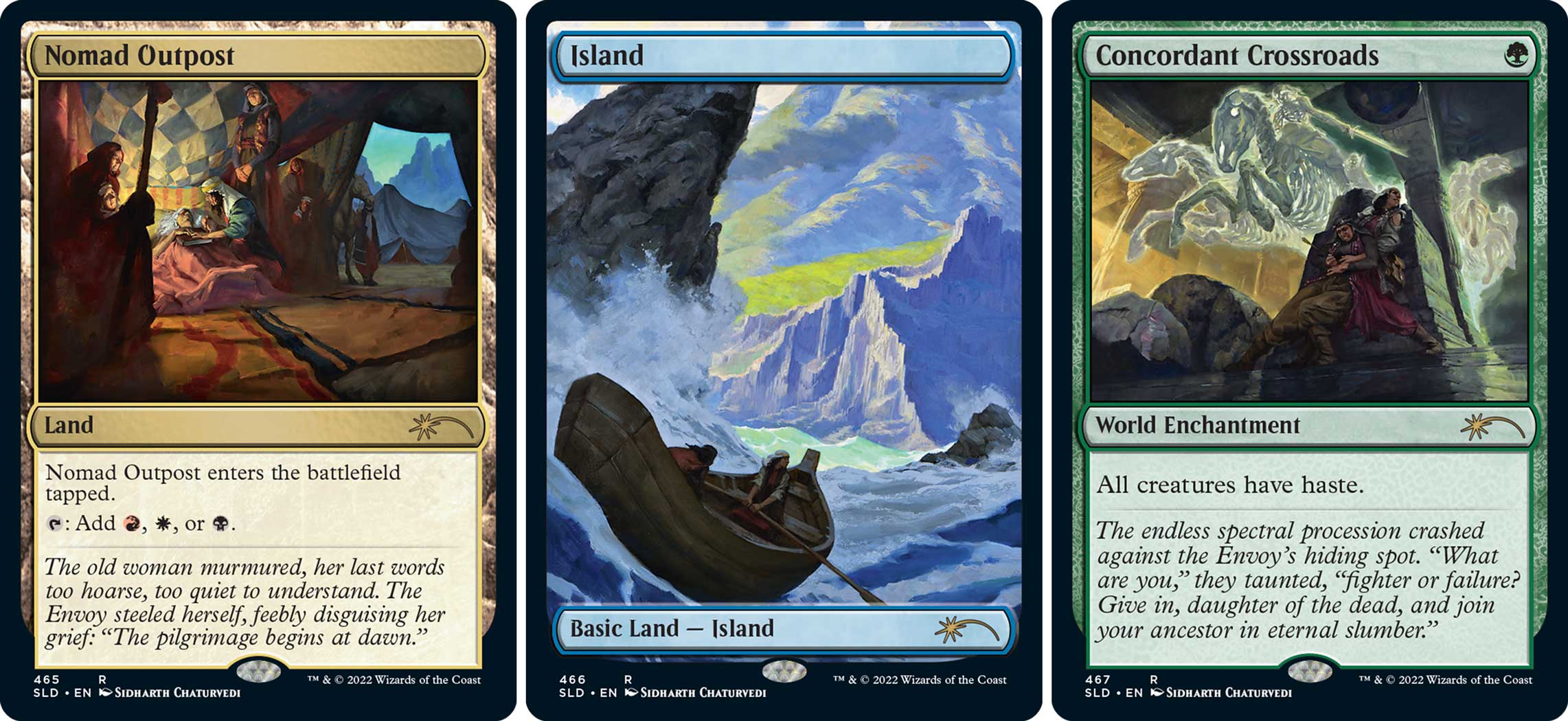
And while the pilgrimage’s reward, seen on Ghost Quarter, is more literal than usual, it does point to an important truth: funerals and related practices are at least as much for the benefit of the living as for the dead.
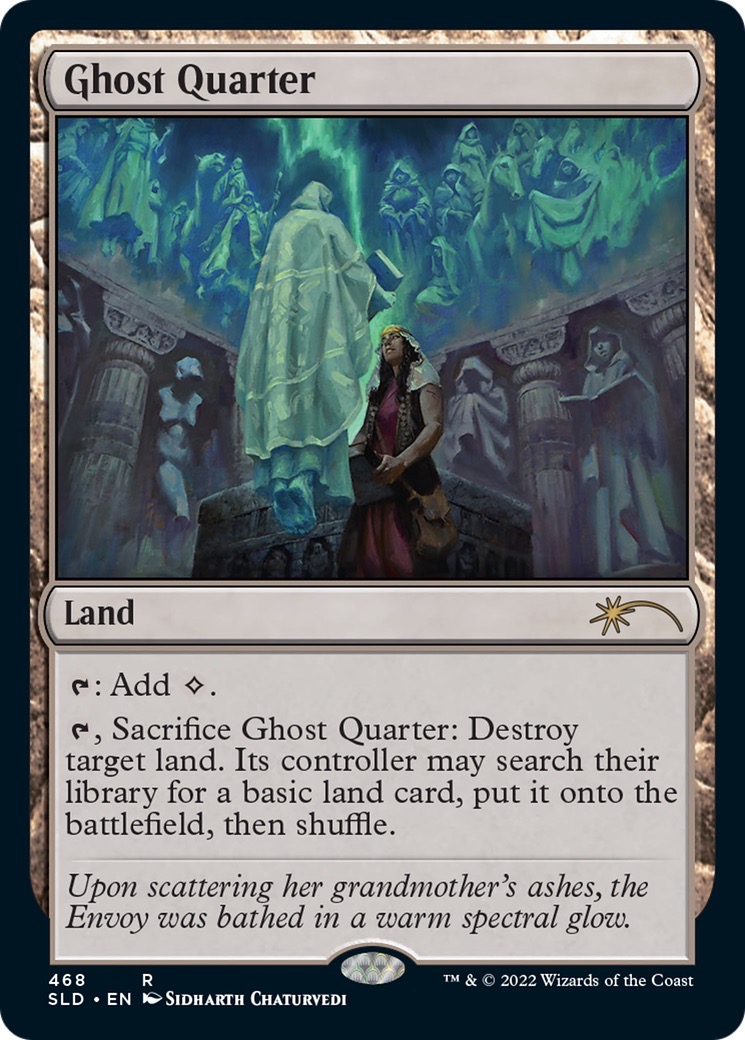
For the Living
Bereavement, grief, and mourning are closely related but not-quite-identical concepts. Bereavement is the state of having lost. Grief, to the extent that it is separate from mourning, is the internal feeling or reaction to bereavement. Mourning is more of an expression of grief, either private or public.
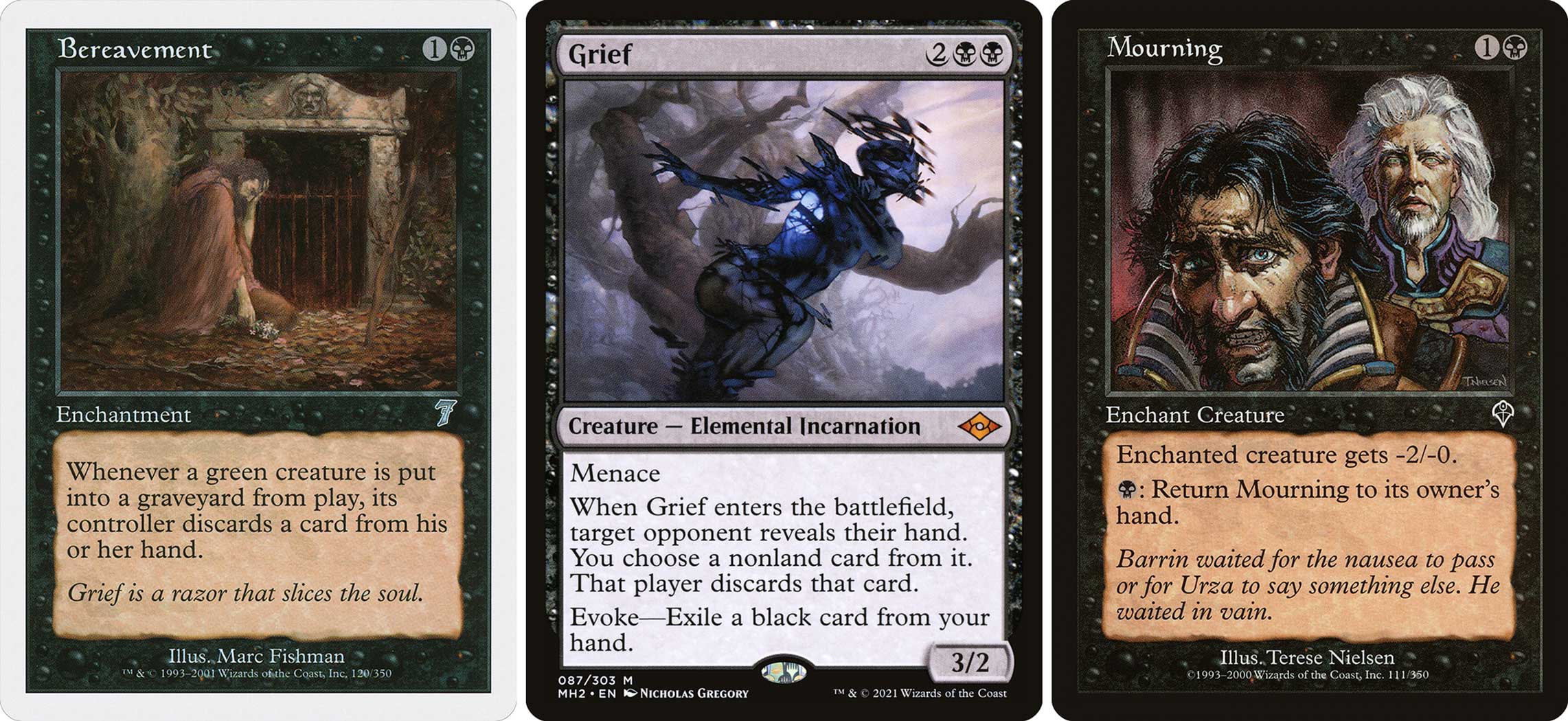
Bereavement, experiencing loss, is part of human nature. It is also potentially dangerous, and Magic: The Gathering, as a game centered on conflict, is quick to exploit the drama of that danger. This is especially prominent in Red, the color of passion and emotion: Feldon of the Third Path and his stubborn attempts to replace the lost Loran; the mix of grief and rage that led Barrin to cast Obliterate on the island of Tolaria; the despondency of the Reckless Cohort, who seems all too eager for an opportunity for self-sacrifice in the Battle for Zendikar.
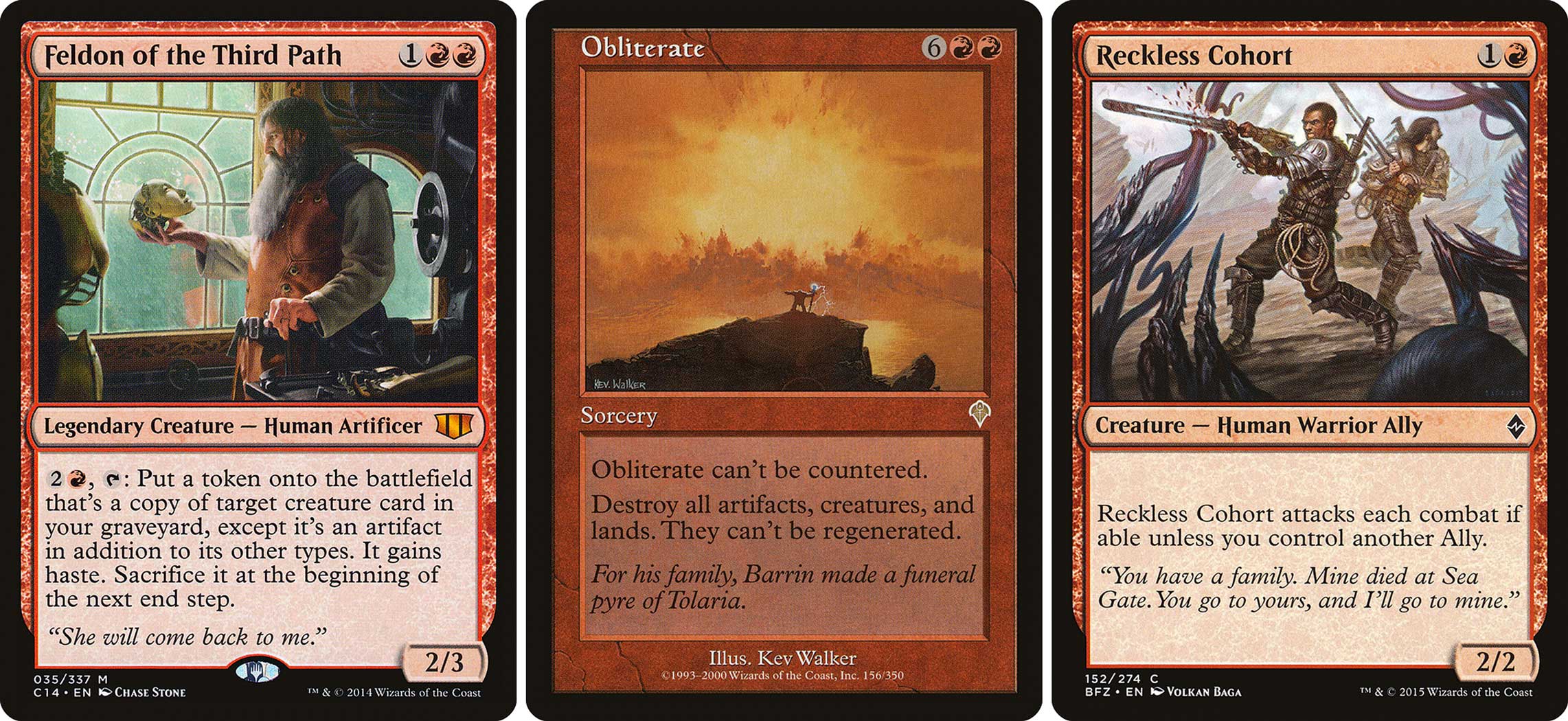
To grieve is also human, though not exclusively so. After the Battle for Zendikar, on the continent of Bala Ged, an Elemental Horror lurked: Yarok, the Desecrated. A former nature guardian twisted by war and the Eldrazi, Yarok troubles Bala Ged with smaller Elementals in its grim places.
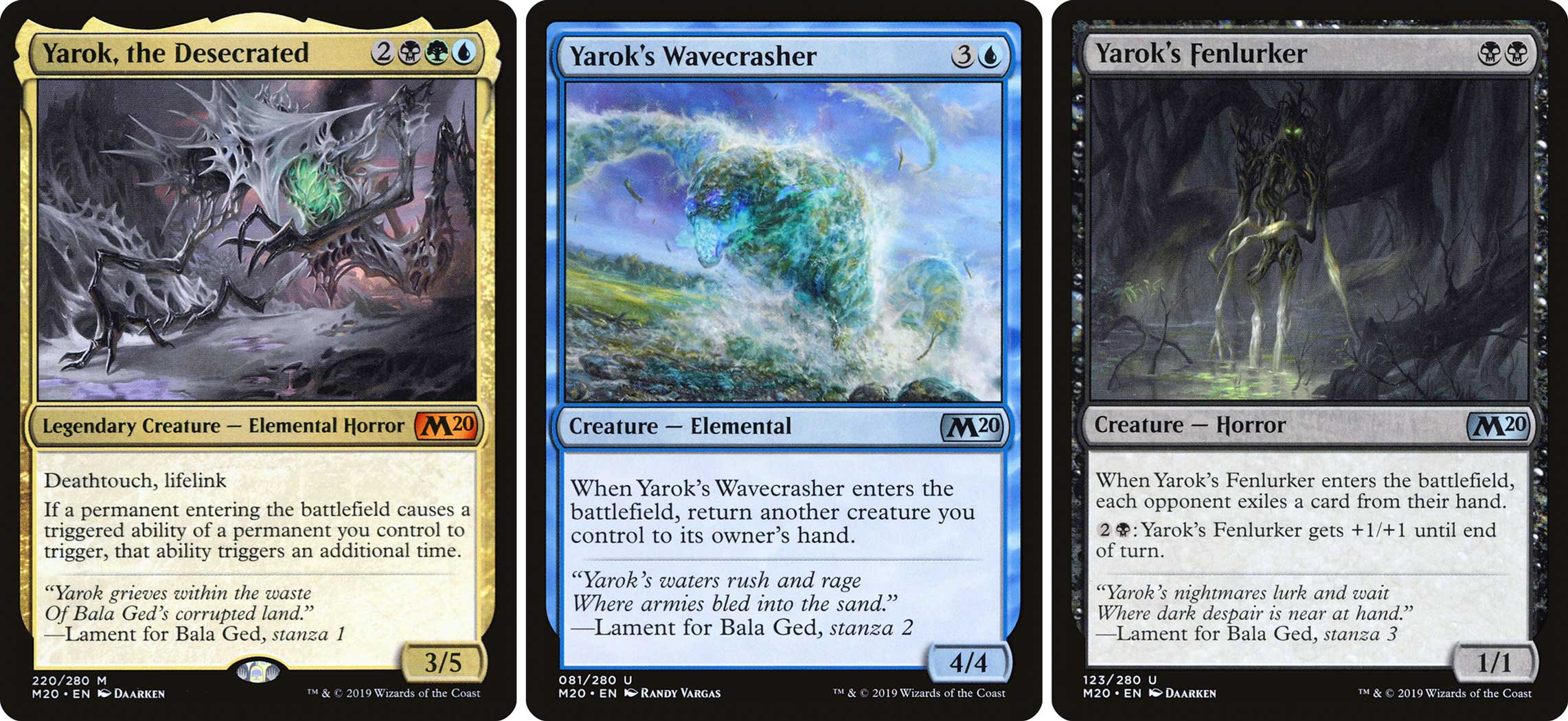
Yet the Lament for Bala Ged does not end with the third stanza. As the fourth proclaims: “Grief and rage and nightmares fade / Where hope and comfort make their stand.”
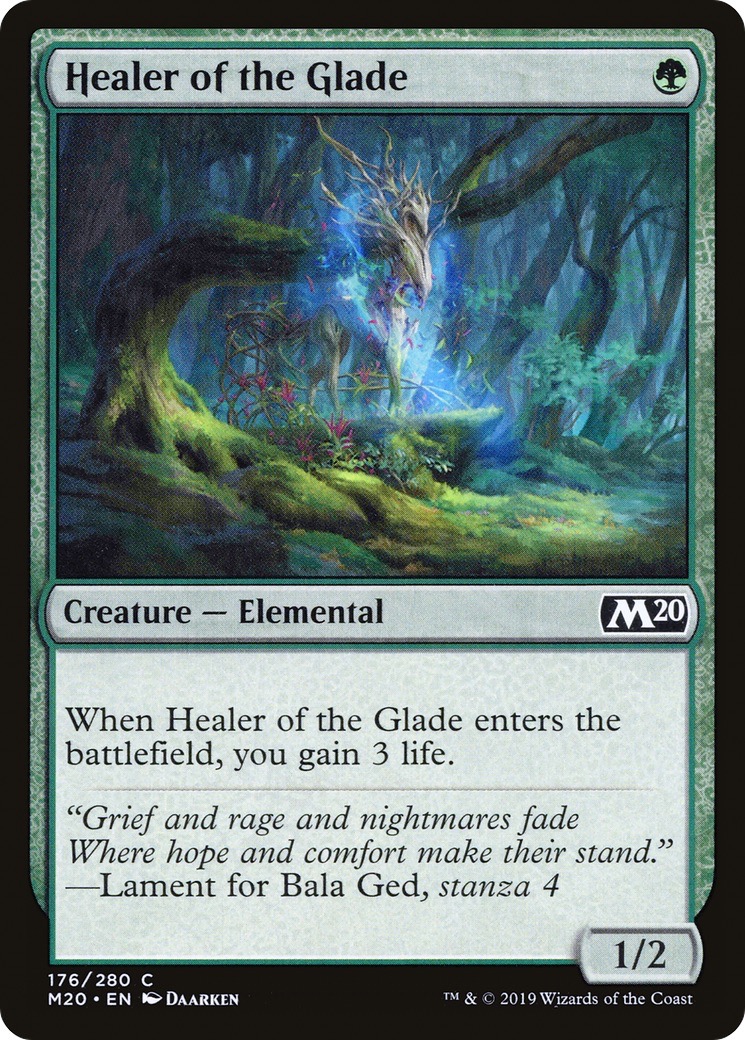
Hope and comfort are two of the best aspects of mourning. They point the way to a life that accommodates loss without allowing it to dominate and tell grievers that they are not alone on the journey there. Yet hope and comfort, and the rites and symbols of mourning, are products of civilization and stability. A recurrent theme in Magic is mourning deferred until the crisis that caused a bereavement has passed.
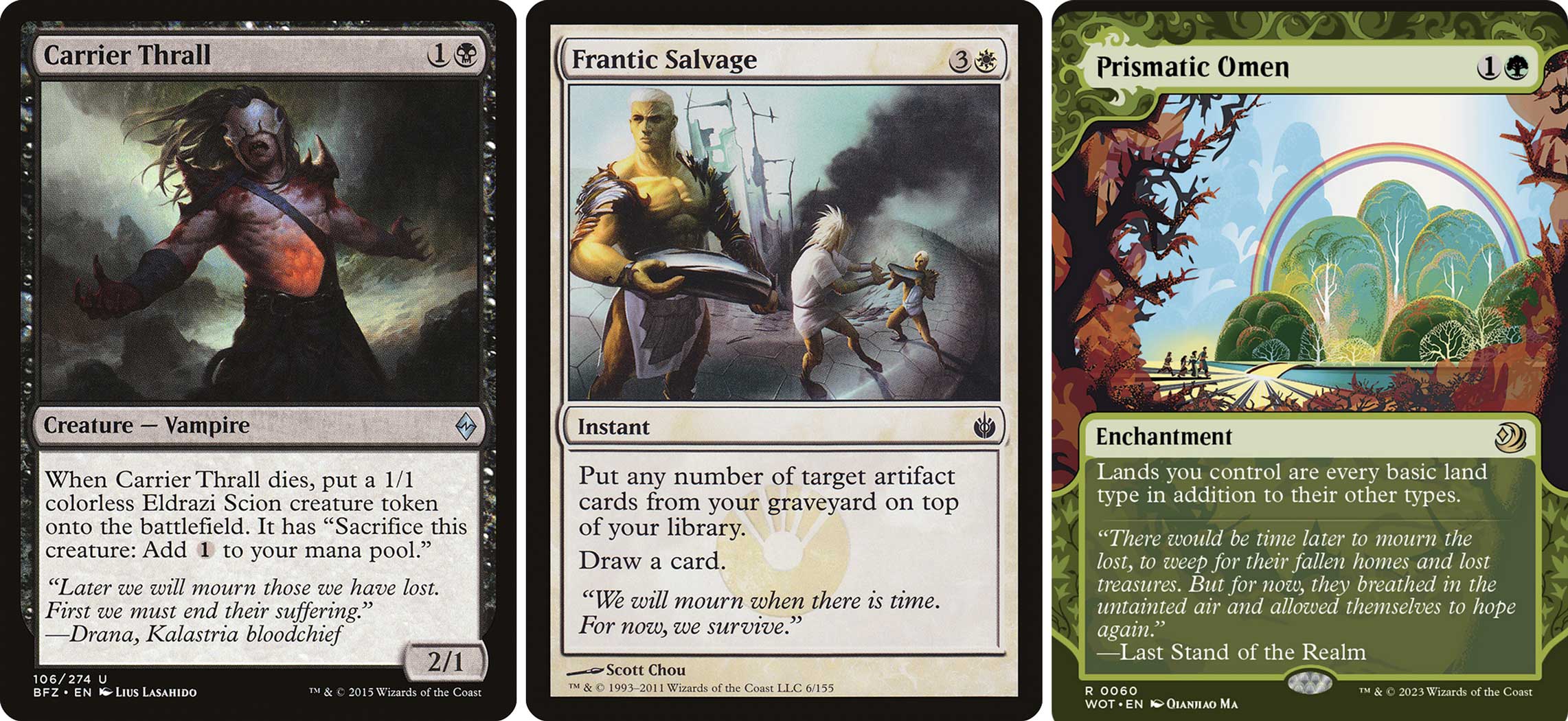
Mourning scales from society-wide to the smallest detail on a single person. Two cards from Magic’s first set, Limited Edition Alpha, show these extremes. The flavor text on Hurloon Minotaur describes “hymns of the dead” that “can last for days, filling the mountain valleys with their low, haunting sounds.” Power 9 card Mox Jet, on the other hand, derives from the tradition of Victorian mourning jewellery (British spelling intended), which used jet, an easily carved version of lignite or low-grade coal, to thread the needle between the conflicting social demands of expressing widowhood and femininity.
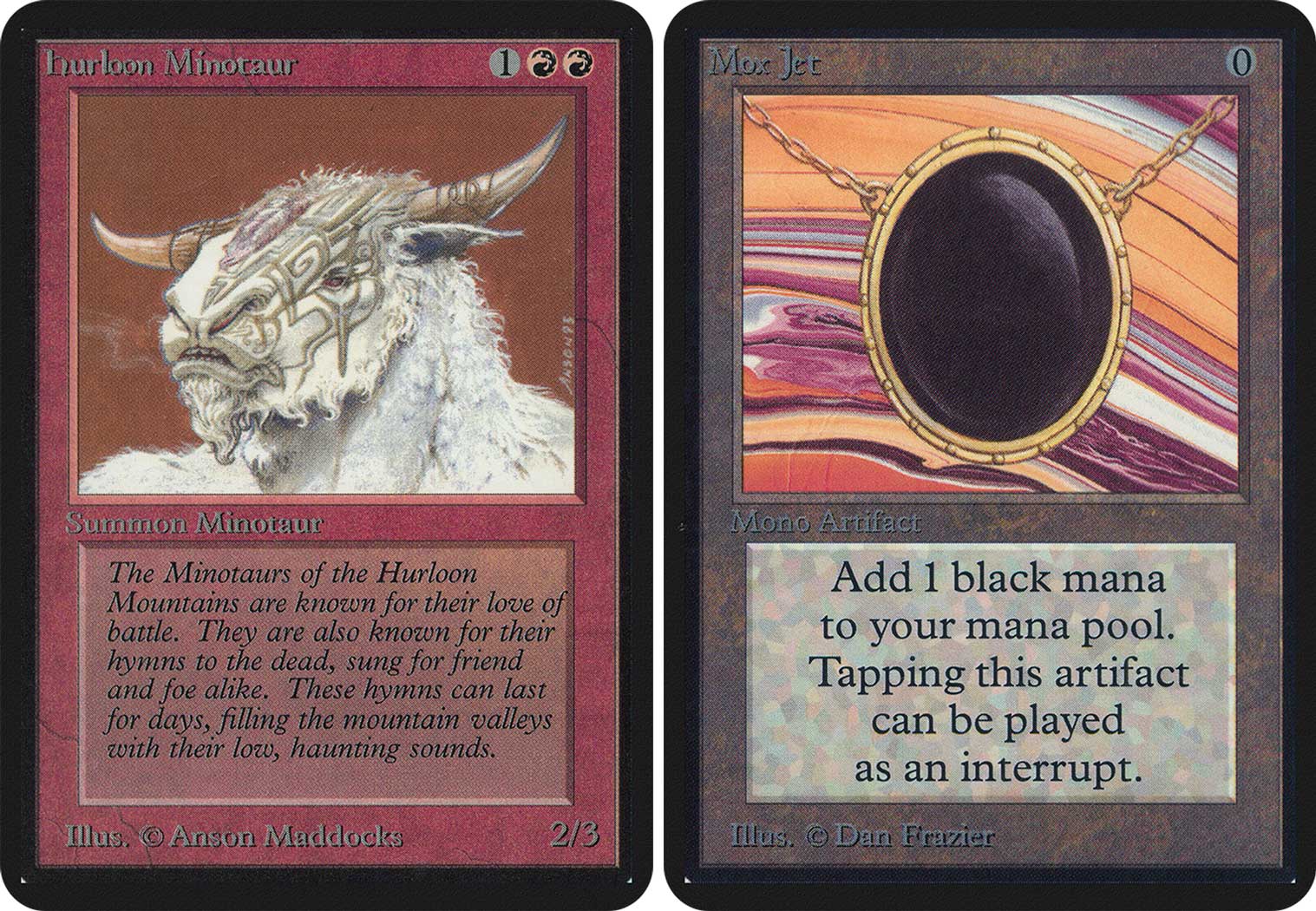
A common, though not omnipresent, aspect of mourning is the creation of a memorial for the deceased. This can take several forms, such as images or planting trees, but the most frequent and familiar are the grave-and-marker (below ground) and tomb (above ground). These two forms combine practical and ceremonial service to the dead with a locus for remembrance by the living.
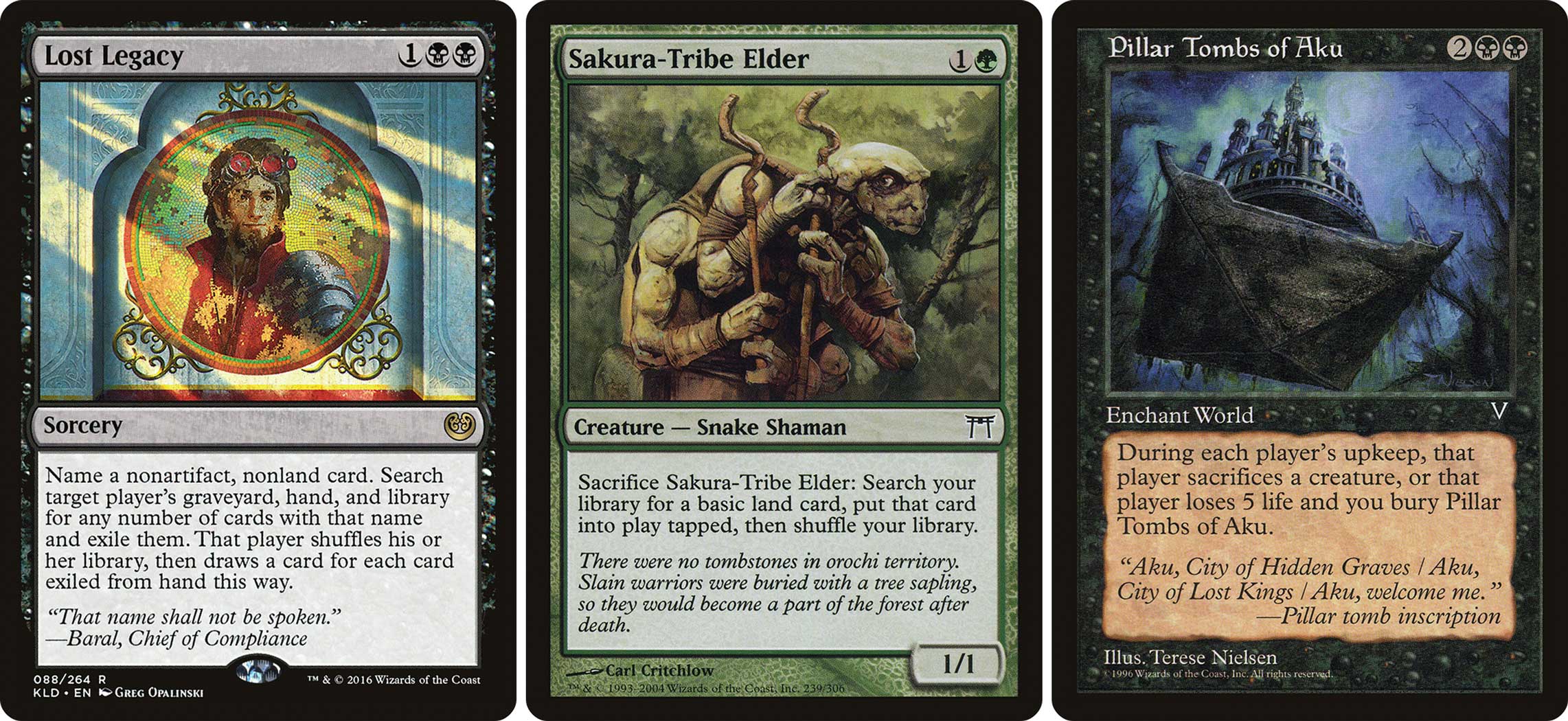
Elaborate tombs can express the wealth and power of their subject or their builders, while even the simplest epitaph can offer wisdom to the living.
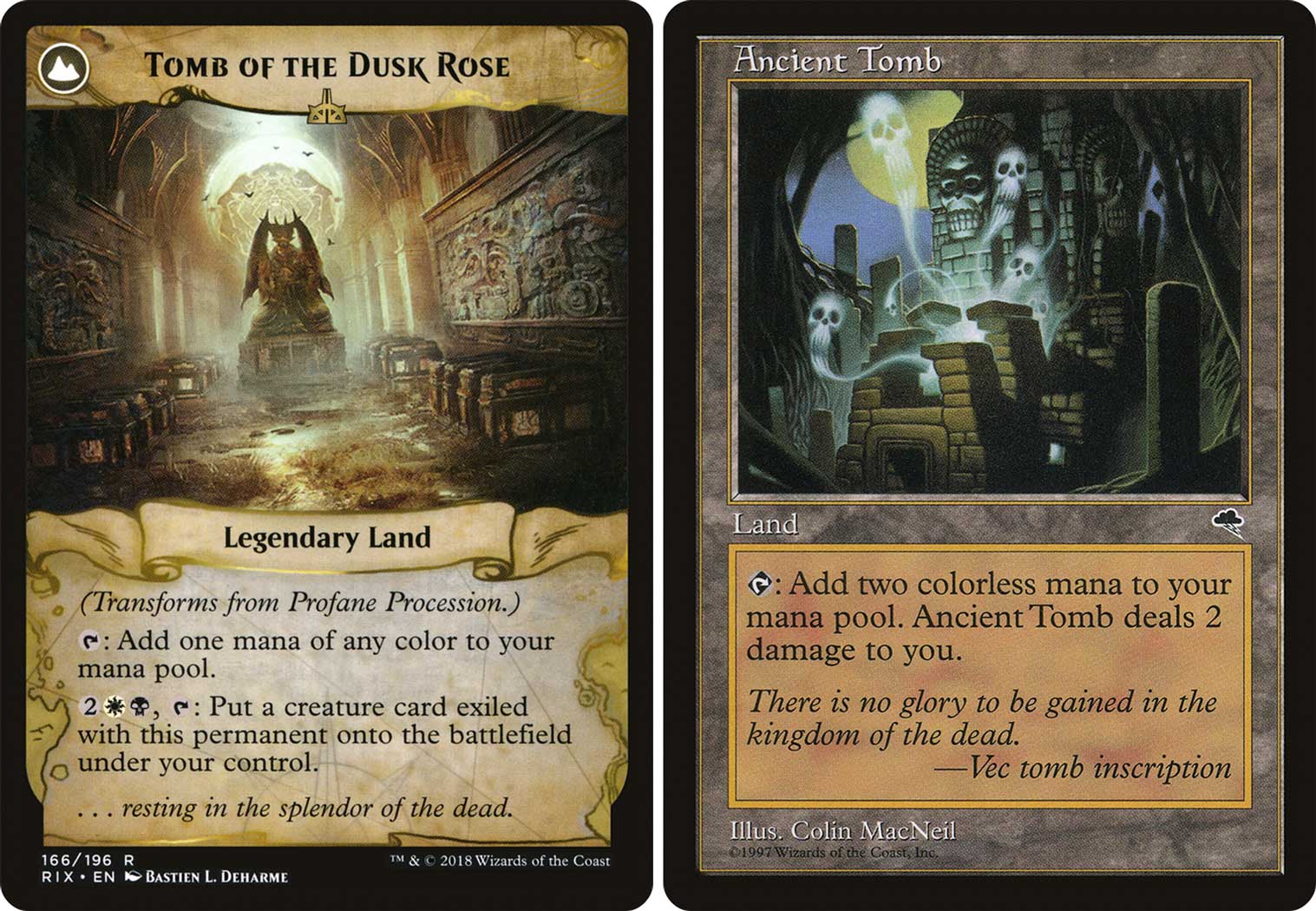
A tomb can be individual or collective, as in the multiple interments at Westminster Abbey, the assemblages of ashes in a columbarium, or the Martyrs’ Tomb of Dominaria. The cenotaph shows how a structure can be a tomb without holding any remains.
![[CARD IMAGES: Martyrs' Tomb (Apocalypse); Tormod's Crypt (Core Set 2021)]](https://www.hipstersofthecoast.com/wp-content/uploads/2023/09/magic-and-death-13.jpg)
There are other forms of remembrance, not all of them sorrowful. The jazz funeral starts in solemnity but ends far differently. Samut, former planeswalker of Amonkhet, turned the death of one of her deities into a rallying cry. The Dawnhart witches of Innistrad chose the celebration of life over the mourning of loss.
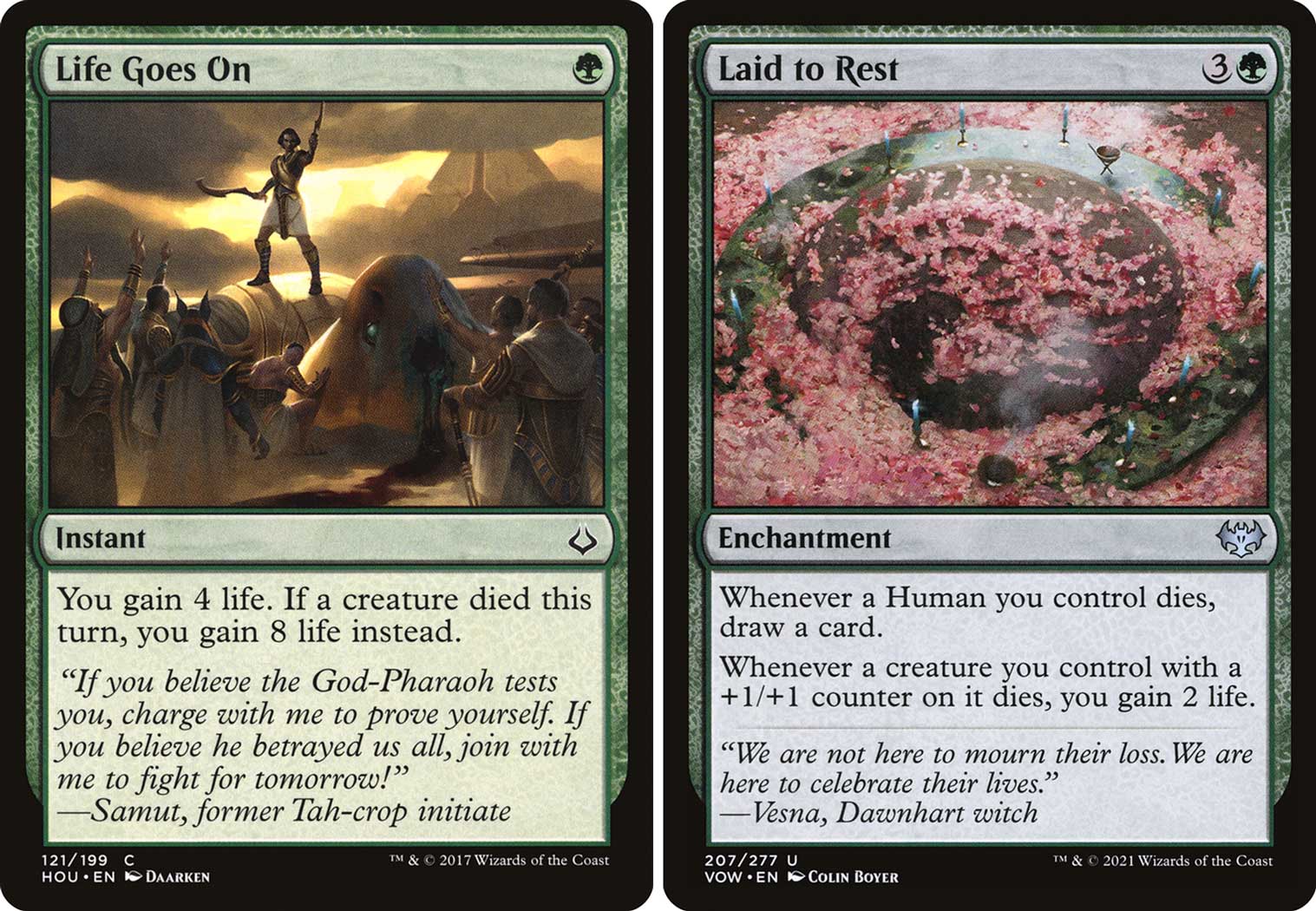
For what do the living have that the dead do not? Life itself. We can build the resolve to move forward with a life that is, as Bequeathal states, “hard, yet too soon past.” And carrying on can itself be a form of mourning, as seen on the Fifth Edition version of Scavenger Folk and in the haunting final sentence of “Out, Out—” by Robert Frost: “And they, since they / Were not the one dead, turned to their affairs.”
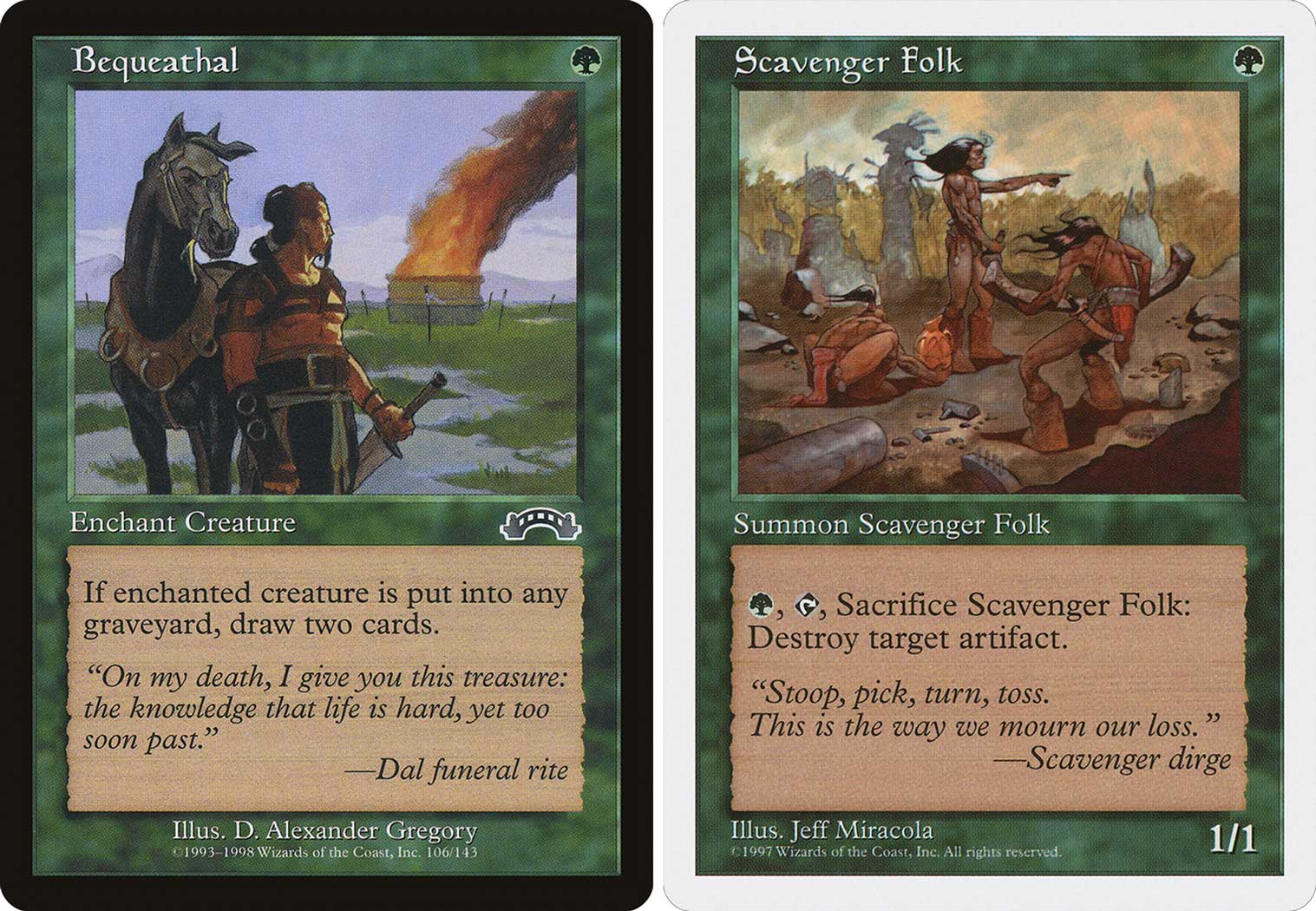
I, too, must turn to my affairs. There are other writers with other articles that promise new discoveries. Every unexpected memory, every “guess I’m not done crying,” is a reminder that saying goodbye isn’t one moment or one day but a sequence neither knowable nor easily predicted. Weeks later, I’m still unsure what life will be like without Sheldon Menery in it.
I’ll find out all the same.

